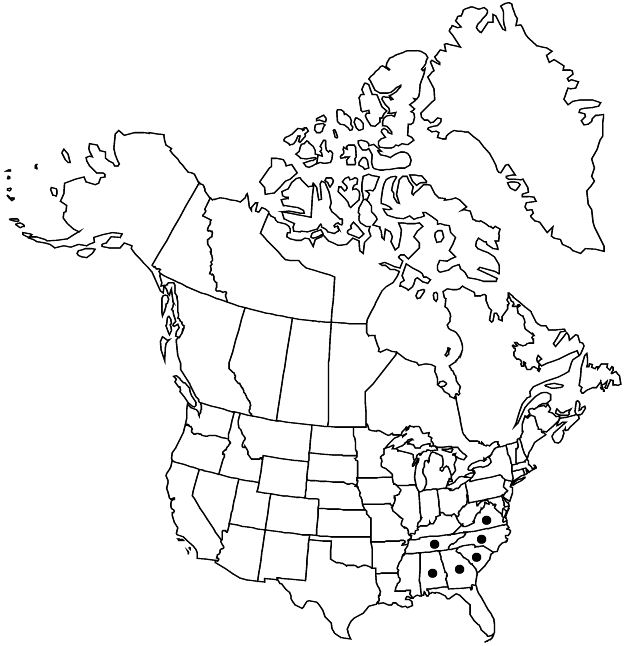Crataegus aprica
Bot. Gaz. 30: 335. 1900.
Shrubs, 20–30 dm. Stems: twigs ± flexuous, new growth olive green, sparsely pubescent, 1-year old reddish brown, pubescent, older dark gray-brown, glabrous; thorns on twigs straight or recurved, 2-years old dark gray-brown, slender, 3–4 cm. Leaves: petiole length 20–25% blade, winged distally, pubescent, sessile-glandular; blade rhombic-elliptic or broadly elliptic, 1.5–4 cm, widest near midpoint, ± coriaceous, base sharply constricted, lobes 0 or apiculi, sinuses very shallow, lobe apex acute, margins crenate or serrate, teeth obtuse gland-tipped, veins 3 or 4 per side, apex obtuse, abaxial surface glabrous, adaxial pilose young, glabrescent. Inflorescences 3–6-flowered; branches ± densely pilose; bracteoles caducous, linear, margins glandular. Flowers 13–15 mm diam.; hypanthium pilose (at least proximally); sepals narrowly triangular, 4 mm, margins glandular-serrate, midvein sometimes prominent, abaxially sparsely pubescent; stamens 10, anthers ivory to cream; styles 3–5. Pomes red or reddish orange, orbicular, 9–15 mm diam., sparsely hairy; sepals patent-reflexed; pyrenes 3–5.
Phenology: Flowering Apr–May; fruiting Sep–Oct.
Habitat: Open brush
Elevation: 20–800 m
Distribution

Ala., Ga., N.C., S.C., Tenn., Va.
Discussion
Crataegus aprica is found at the southern end of the Appalachians and upper piedmont, where it may be quite common. Specimens from the Tuskegee National Forest, Macon County, Alabama, have narrower (ca. 2:1), more pointed leaves with 4 or 5 veins per side.
Selected References
None.